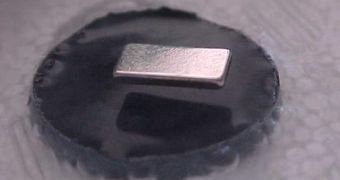Ever since physicists discovered high-temperature copper oxide superconductors during the 1980s, they have been trying to explain how the phenomenon is experienced from the point of view of their understanding of the basic mechanism involved in low-temperature superconductors, which is determined by pair electrons vibrating in the crystal lattice of the respective material. During this process, electrons encounter very little resistance while traveling through the material, thus electric resistance drops to near zero.
However, although many physicists believe that this is the most likely explanation, other researching teams have shown over the years that, in fact, the pair electrons vibrating inside the crystal lattice can only account for a small fraction of materials' superconducting behavior.
"It's a politically charged problem, a little like trying to find the tomb of Jesus. An atheist could not care less, nor would a Muslim or a Buddhist be excited, but for believers it would be a monumental discovery. So it is with the phonon mechanism of high-temperature superconductivity," says McMaster University researcher Tom Timusk.
Low-temperature superconductivity is well explained through the Bardeen-Cooper-Schrieffer theory, in which two electrons are forced together by lattice vibrations in order to form a 'Cooper pair', which may travel through the crystal without experiencing any resistance. Albeit, the same theory cannot explain how electrons may pair up within high-temperature superconductors, even though many physicists still believed that a similar phenomenon might be involved and physical evidence to support the theory has been found.
In 2001, separate experiments showed that electrons in high-temperature superconductors experienced a distortion in the energy-momentum relationship between 50 to 80 meV, suggesting that they are interacting with each other through bosons, although it was not identified as a phonon.
Experiments trying to establish whether or not the distortion was caused by phonons such as that at the Institute for Solid-State Physics and the Max-Planck Institute for Solid-State Research revealed that the theoretical energy-momentum relationship does indeed produce a distortion, however up to five times smaller that originally observed, meaning that phonons cannot account for high-temperature superconductors behavior.
"It is embarrassing for people to admit they have worked on something for 20 years if it is not true," says Dirk Manske from the Institute for Solid-State Physics in Karlsruhe. Alternatively, University of California and Berkeley researchers, amongst whom Steven Louie, reached the same conclusion in their calculations.
All that remains now is the daunting task of finding a new explanation for the behavior of high temperature superconductors. Possibly one involving electron spin interactions which occur over shorter ranges than those observed in phonons. "There are many experimental techniques being used to interrogate the high-temperature superconductors. With increasingly better samples and advances in experimental techniques, data from these measurements are revealing more and more detailed, systematic results. The correct theory of superconductivity for the high-temperature cuprates will have to consistently explain all these data."

 14 DAY TRIAL //
14 DAY TRIAL //